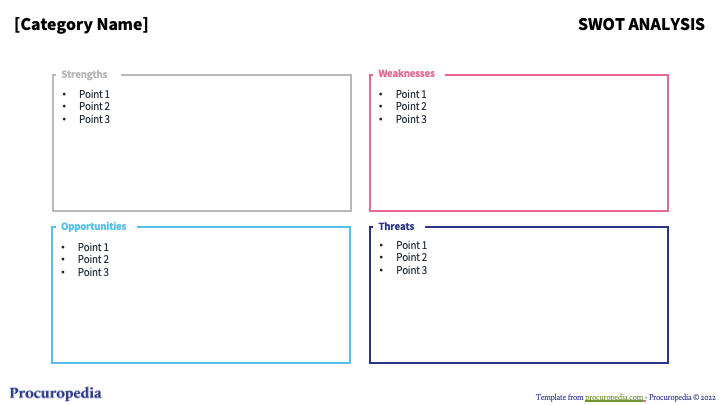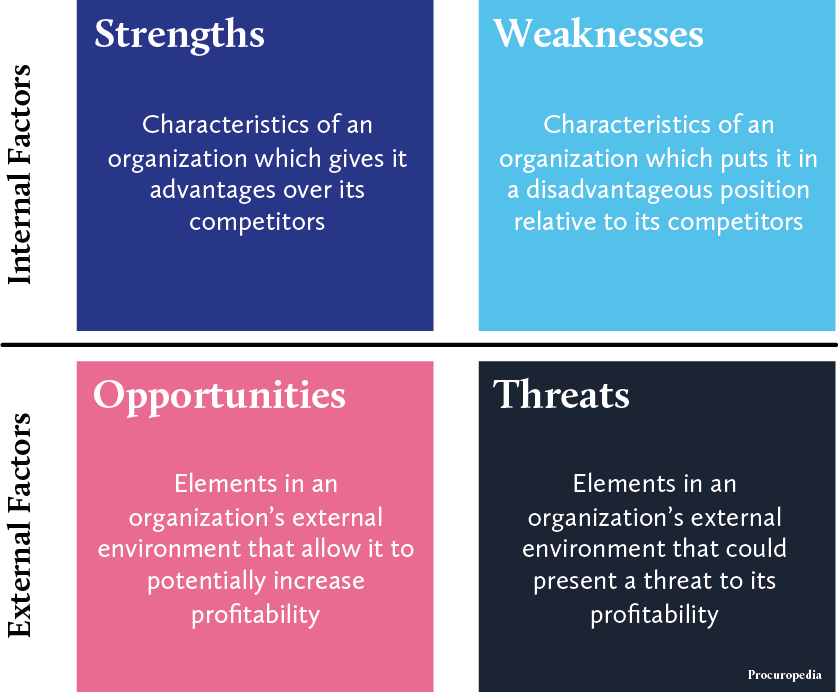Definition
SWOT stands for Strengths, Weaknesses, Opportunities and Threats. A SWOT Analysis (sometimes known as a SWOT Matrix) helps identify a company/organization’s strengths, weaknesses, opportunities, and threats. This is a method of strategic planning that primarily helps frame a company-specific business model. This business model shall focus on aligning the company’s resources and potential to the demands of the environment (composed of social, economic, legal, national, and international events) in which the company operates. A SWOT Analysis can play a significant role in analyzing an organization’s supply base. It is a great way of assessing a supplier and the factors that affect it.
Templates

Need more help? Have a request? Please drop us a line...

